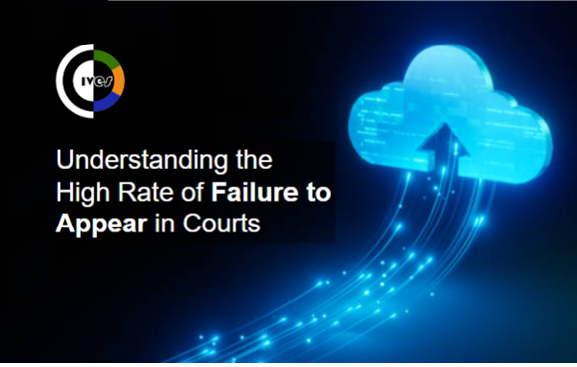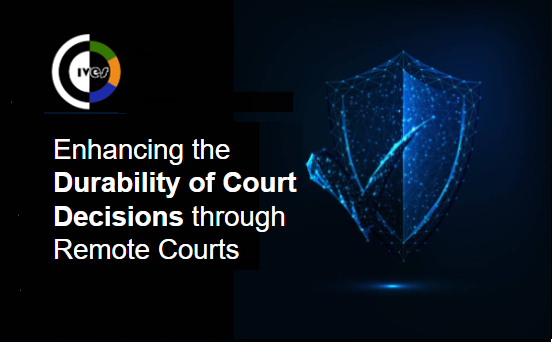Resolving limited access to technology in remote courts
Resolving limited access to technology in remote courts is crucial to ensure equal access to justice for all participants. Here are some strategies...
2 min read
Brian McGlynn : May 24, 2023 4:00:00 PM

The phenomenon of Failure to Appear (FTA) in courts, where individuals miss their scheduled court hearings, is a complex issue with far-reaching implications for the justice system. This essay explores the myriad factors contributing to the high rate of FTA in courts, shedding light on the underlying challenges and barriers faced by individuals who find themselves entangled in the legal process.
Socioeconomic Barriers: One of the most salient factors contributing to FTA is the formidable wall of socioeconomic barriers that many individuals encounter. Economic hardship can render attending court hearings a burdensome task. The costs associated with transportation, childcare, and missed workdays can make compliance with court orders a financial impossibility for some. For those living on the edge of financial stability, the dilemma between adhering to legal obligations and meeting the immediate needs of their families can be heart-wrenching.
Lack of Awareness: A less overt but equally influential factor is the lack of awareness about the significance of attending court hearings. Individuals may underestimate the importance of these appearances or may be uninformed about the consequences of noncompliance. This dearth of understanding can lead to apathy or neglect, causing individuals to miss their court dates inadvertently.
Mental Health and Substance Abuse: Mental health issues and substance abuse problems often intersect with legal entanglements, creating a vicious cycle that hinders court appearances. These individuals may struggle to engage with the legal system effectively due to the turmoil in their lives. Erratic behavior resulting from these challenges can cause missed court dates and further legal complications.
Transportation Challenges: Transportation issues play a pivotal role in FTA rates, particularly in areas with limited public transportation infrastructure. Individuals without access to reliable transportation may face insurmountable hurdles in reaching the courthouse, leading to nonappearance.
Family Responsibilities: For many individuals, the duty of caring for children or other family members takes precedence over court appearances. The absence of affordable childcare options exacerbates this issue. Balancing family responsibilities with legal obligations becomes an arduous task, often resulting in missed court hearings.
Fear of Arrest: A palpable fear of arrest looms over individuals with unresolved legal matters or outstanding warrants. This apprehension discourages them from attending court hearings, perpetuating a cycle of avoidance.
Communication Issues: Communication problems also contribute to FTA rates. Mailed court notifications may not reach individuals due to frequent address changes, unstable housing situations, or issues with mail delivery. Consequently, individuals miss court dates because they are unaware of them.
Complex Legal System: The legal system, with its intricate procedures and arcane terminology, can be overwhelmingly daunting, especially for those without legal representation. Navigating court processes and comprehending legal requirements can seem insurmountable, dissuading individuals from participating fully in the legal process.
Distrust of the Legal System: A deep-seated mistrust of the legal system, often stemming from perceived injustices or negative past experiences, can significantly deter individuals from attending court appearances. This mistrust undermines the legitimacy of the justice system in the eyes of those it seeks to serve.
Personal Crises: Unforeseen personal crises, such as medical emergencies or family emergencies, can disrupt individuals' ability to attend court hearings. These crises may take precedence over legal obligations, leading to missed court dates.
In conclusion, addressing the high FTA rate involves recognizing these multifaceted challenges and implementing strategies to mitigate them. Courts and legal professionals may work to enhance communication, provide education about the legal process, offer remote or virtual appearance options, and establish partnerships with community organizations to provide support services. By addressing the underlying factors contributing to nonappearance, courts can promote greater compliance and ensure that the justice system functions more effectively.

Resolving limited access to technology in remote courts is crucial to ensure equal access to justice for all participants. Here are some strategies...

In recent years, the legal world has witnessed a remarkable transformation, driven by technology's relentless advance. The concept of remote...

There are few better places to talk about the future than Lake Como. In just under three weeks, the Digital Innovation Forum will set up camp in one...